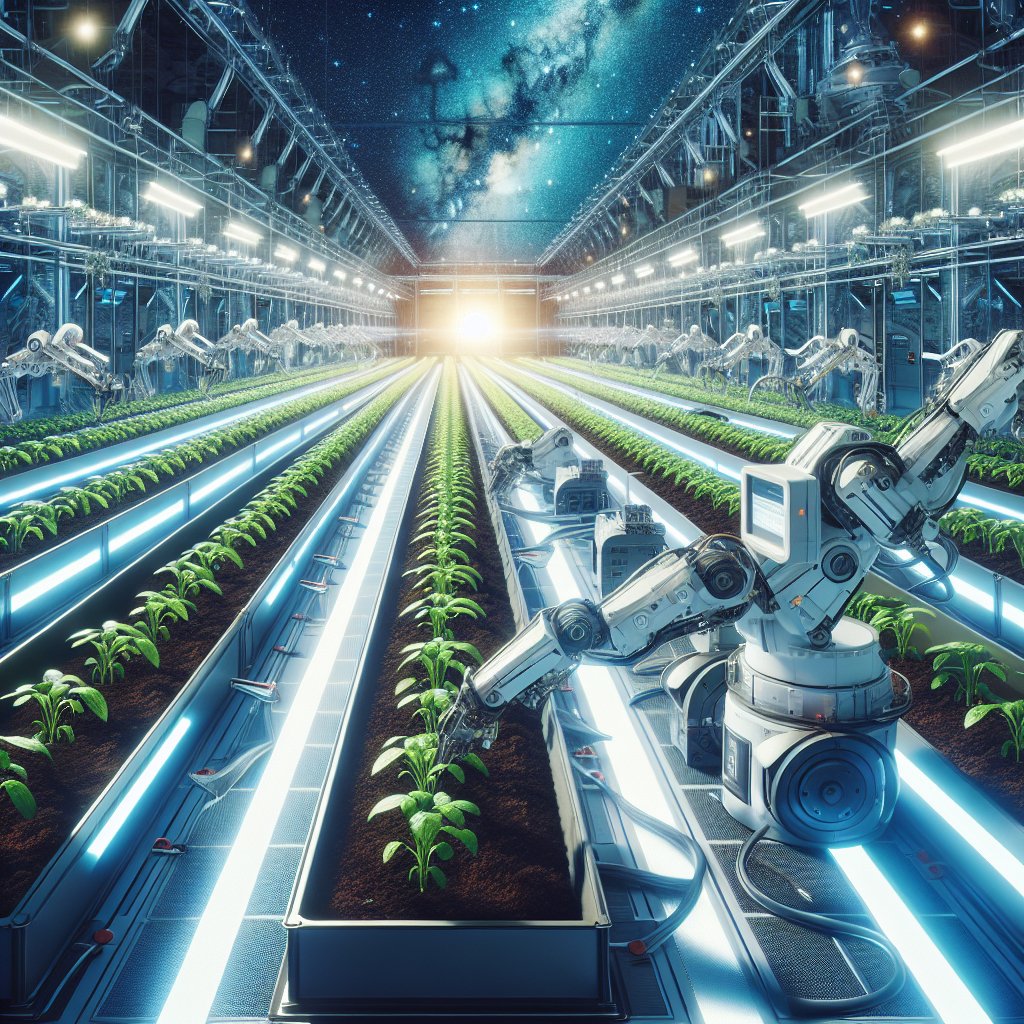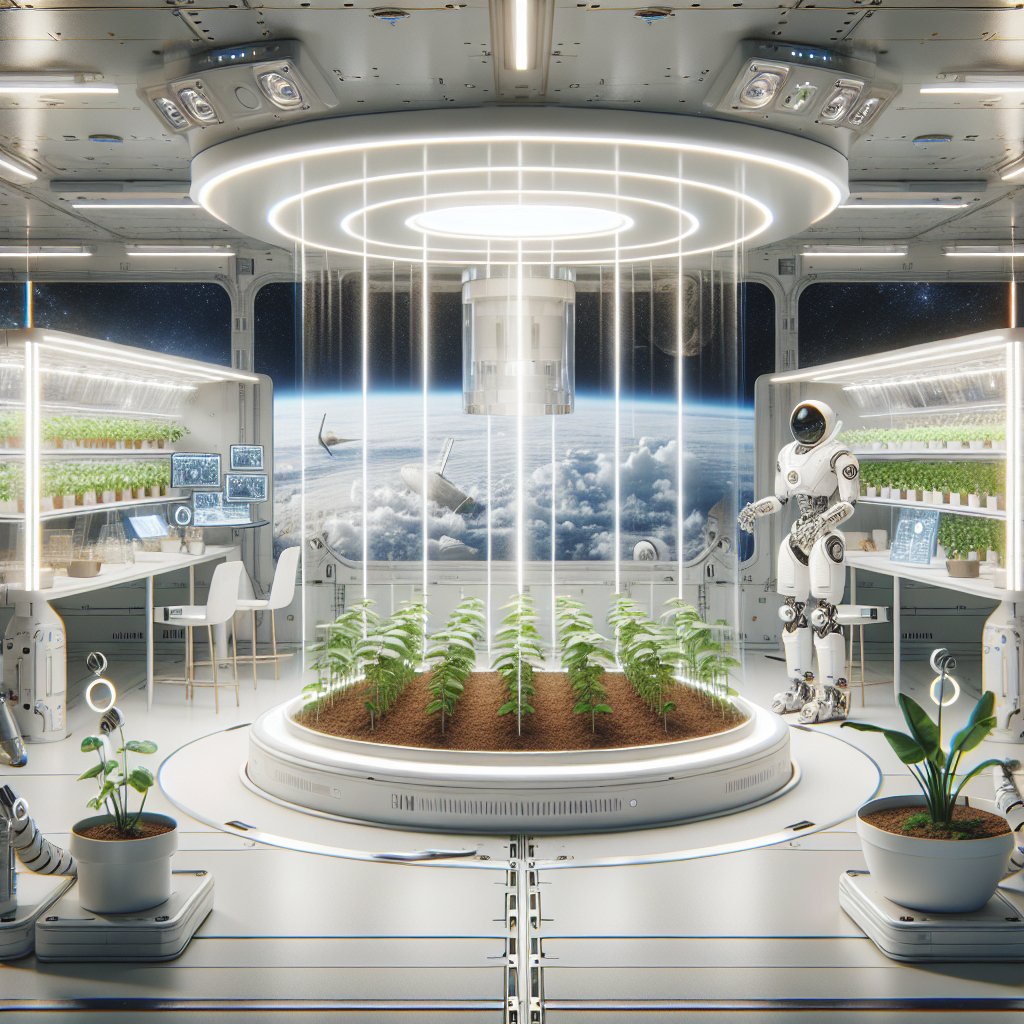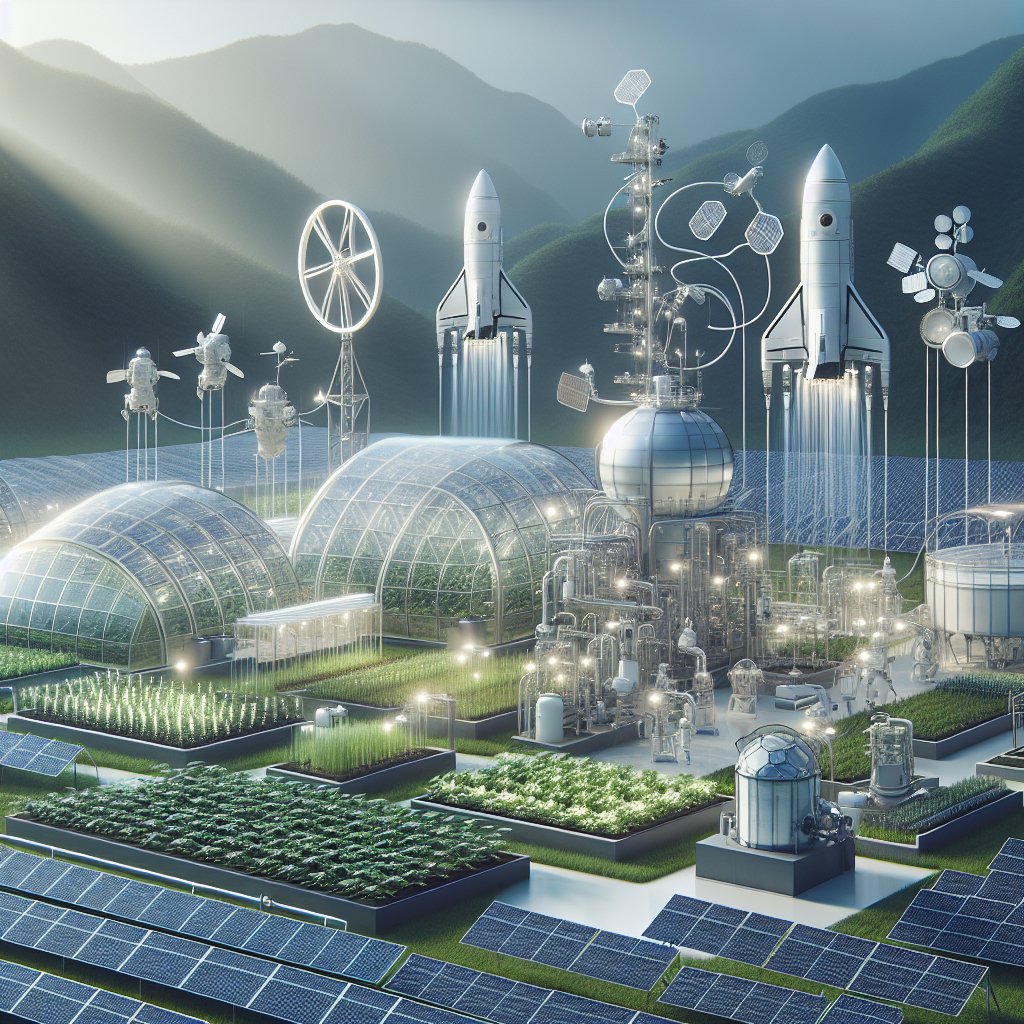The intersection of agriculture and space exploration is a fascinating frontier that promises to redefine how we think about food production in extraterrestrial environments. As humanity sets its sights on colonizing other planets, particularly Mars, the need for sustainable farming practices in space becomes increasingly critical. Autonomous systems are at the forefront of this evolution, offering innovative solutions to the unique challenges posed by off-Earth agriculture. This article delves into the role of autonomous systems in shaping the future of farming in space, exploring their applications, benefits, and the potential they hold for ensuring food security beyond our planet.
The Role of Autonomous Systems in Space Agriculture
Autonomous systems encompass a range of technologies, including robotics, artificial intelligence (AI), and machine learning, which can operate independently or with minimal human intervention. In the context of space agriculture, these systems are designed to address the specific challenges of growing food in environments that are vastly different from Earth. The harsh conditions of space, such as extreme temperatures, radiation, and limited resources, necessitate innovative approaches to farming.
Robotic Farming Systems
Robotic systems are being developed to perform various agricultural tasks in space, from planting seeds to harvesting crops. These robots can be equipped with advanced sensors and AI algorithms that allow them to monitor plant health, soil conditions, and environmental factors. For instance, NASA’s Veggie experiment aboard the International Space Station (ISS) has demonstrated the feasibility of growing fresh produce in microgravity. Future iterations of such systems could involve fully autonomous robots capable of managing entire farms on Mars or the Moon.
- Planting and Cultivation: Autonomous robots can be programmed to plant seeds at optimal depths and spacing, ensuring efficient use of space and resources.
- Monitoring and Maintenance: Equipped with sensors, these robots can continuously monitor plant growth, detect diseases, and apply nutrients or water as needed.
- Harvesting: Once crops are ready for harvest, robots can efficiently gather produce, minimizing waste and maximizing yield.
AI and Data-Driven Decision Making
Artificial intelligence plays a crucial role in optimizing agricultural practices in space. By analyzing data collected from various sensors, AI systems can make informed decisions about crop management. For example, machine learning algorithms can predict the best times for planting and harvesting based on environmental conditions, ensuring that crops are grown under optimal circumstances.
Moreover, AI can help in resource management, a critical aspect of space agriculture. Water and nutrients are limited in space, and efficient use of these resources is essential for sustainable farming. AI systems can analyze data on water usage and nutrient levels, allowing for precise application and reducing waste.
Benefits of Autonomous Farming Systems in Space
The implementation of autonomous systems in space agriculture offers numerous benefits that extend beyond mere convenience. These advantages are crucial for the success of long-term human missions to other planets.
Increased Efficiency and Productivity
One of the primary benefits of autonomous farming systems is their ability to operate continuously without the need for breaks, unlike human labor. This capability can significantly increase the efficiency and productivity of farming operations in space. Robots can work around the clock, ensuring that crops receive the care they need at all times.
Reduced Human Labor and Risk
Farming in space presents unique risks, including exposure to radiation and the challenges of living in confined environments. By utilizing autonomous systems, the reliance on human labor can be minimized, reducing the potential risks to astronauts. This shift allows humans to focus on other critical tasks, such as research and exploration, while robots handle the agricultural responsibilities.
Enhanced Sustainability
Autonomous systems can contribute to more sustainable farming practices by optimizing resource use and minimizing waste. For instance, precision agriculture techniques enabled by AI can ensure that water and nutrients are applied only when and where they are needed, reducing the overall consumption of these vital resources. This sustainability is essential for long-term missions, where resupplying from Earth may not be feasible.
Challenges and Future Directions
Despite the promising potential of autonomous systems in space agriculture, several challenges must be addressed to realize this vision fully. Understanding these challenges is crucial for developing effective solutions that will enable successful farming beyond Earth.
Technical Limitations
While robotic and AI technologies have advanced significantly, there are still technical limitations that need to be overcome. For example, the harsh conditions of space can affect the performance of robotic systems. Engineers must design robots that can withstand extreme temperatures, radiation, and dust, ensuring their reliability in extraterrestrial environments.
Integration with Human Operations
Another challenge lies in the integration of autonomous systems with human operations. While robots can perform many tasks independently, there will still be a need for human oversight and intervention. Developing effective communication and control systems that allow humans to monitor and manage robotic operations will be essential for successful space farming.
Research and Development
Continued research and development are critical for advancing autonomous farming technologies. Collaborative efforts between space agencies, universities, and private companies can drive innovation and lead to the creation of more sophisticated systems. Testing these technologies in simulated environments on Earth, such as Mars analog habitats, will provide valuable insights into their performance and reliability.
Conclusion
The future of farming in space is inextricably linked to the development of autonomous systems. As humanity embarks on the journey to explore and colonize other planets, the ability to grow food sustainably will be paramount. Autonomous robots and AI-driven technologies offer innovative solutions to the challenges of space agriculture, enhancing efficiency, productivity, and sustainability. While challenges remain, the ongoing research and development in this field hold great promise for ensuring food security in the cosmos. As we look to the stars, the integration of agriculture and technology will play a vital role in shaping the future of human life beyond Earth.




